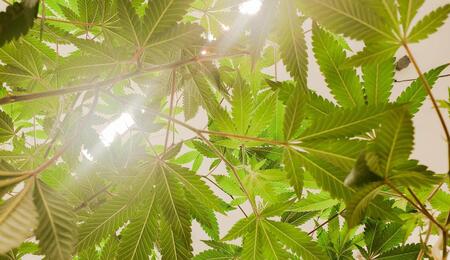Cannabis and Phosphorus. How to deal with Deficiency and Excess?

All plants need Phosphorus in order to thrive. Cannabis plants are no exception. The P in your NPK magic nutrient formula is essential for your home grow, but what happens when plants get too little or too much of it?
A significant amount of energy each plant gets from the sun stores as Phosphorus. Plants then process this element to perform a number of metabolic processes, for instance photosynthesis.
Cannabis plants need Phosphorus throughout all stages of growth. During germination, root formation, growing and flowering. Phosphorus helps cannabis plants remain healthy and vigorous. A nonmetallic chemical element of the nitrogen family, Phosphorus (P) also forms part of the plant's DNA. Effectively, it's the backbone of DNA and the P in ATP, the molecule that brings energy into all the different cells.
So, how do you know when your plant has Phosphorus Deficiency?
Phosphorus deficiency happens when marijuana crops fail to process sufficient amounts of the element. In this case, it's good to know how Phosphorus moves around the plant. Where it deposits at first, and where later.
As a mobile nutrient, Phosphorus first builds-in in the youngest leaves of the cannabis plant, where in fact the plant pushes the most effort into growing and developing. When those first leaves are not so young anymore, they still contain Phosphorus, but part of it has moved up in the upper parts of the plant. The oldest and lowest leaves of the marijuana plant may start to turn yellow when Phosphorus entirely moves out from there. This could indicate a deficiency, but a key sign is when more and more leaves of the plant begin to switch their colour to yellow. This is where it gets serious.
Growers must treat this type of deficiency immediately in order to avoid massive and rapid defoliation. Should this happen, the deficiency threatens the performance of critical functions of the plant organism. The plant's immune system will quickly crumble, making the plant a target of pests, fungi and other microbes that thrive on the vulnerable plant. And what grower would like that to happen to their crop?
How to treat cannabis plant Phosphorus deficiency?
First thing first, check the pH of the soil where the cannabis plant is. The pH value ought to be in the range of 5.5-6.5, while the acceptable pH for hydroponics is between 5.5 and 6.2.
Next, flush the roots with a stable pH suitable for the growth stage of the plant and water with a balanced fertilizer that has lots of Phosphorus.
Both organic and mineral fertilizer work for solving out a nutrient lockout. When you follow these steps, you should manage to reduce other elements such as zinc and iron that may be blocking the plant's uptake and processing of Phosphorus. With balanced soil, there you go, a balanced well-nourished plant.
How to treat Phosphorus excess?
In the second scenario, growers may face the issue of Phosphorus excess. When there is an excess of Phosphorus, it usually means the plant struggles to get to other nutrients it also needs to thrive. Calcium, copper, iron, zinc, magnesium... the plant needs a mix of that too so that it can grow properly and thrive.
The key step is to flush out the plant roots with an excess amount of water, much more than the container where your crop is can withhold water. Additionally, use products that dissolve salts to ease the flushing of the roots. Check and adjust the pH level accordingly.
Good luck growing!



.png)